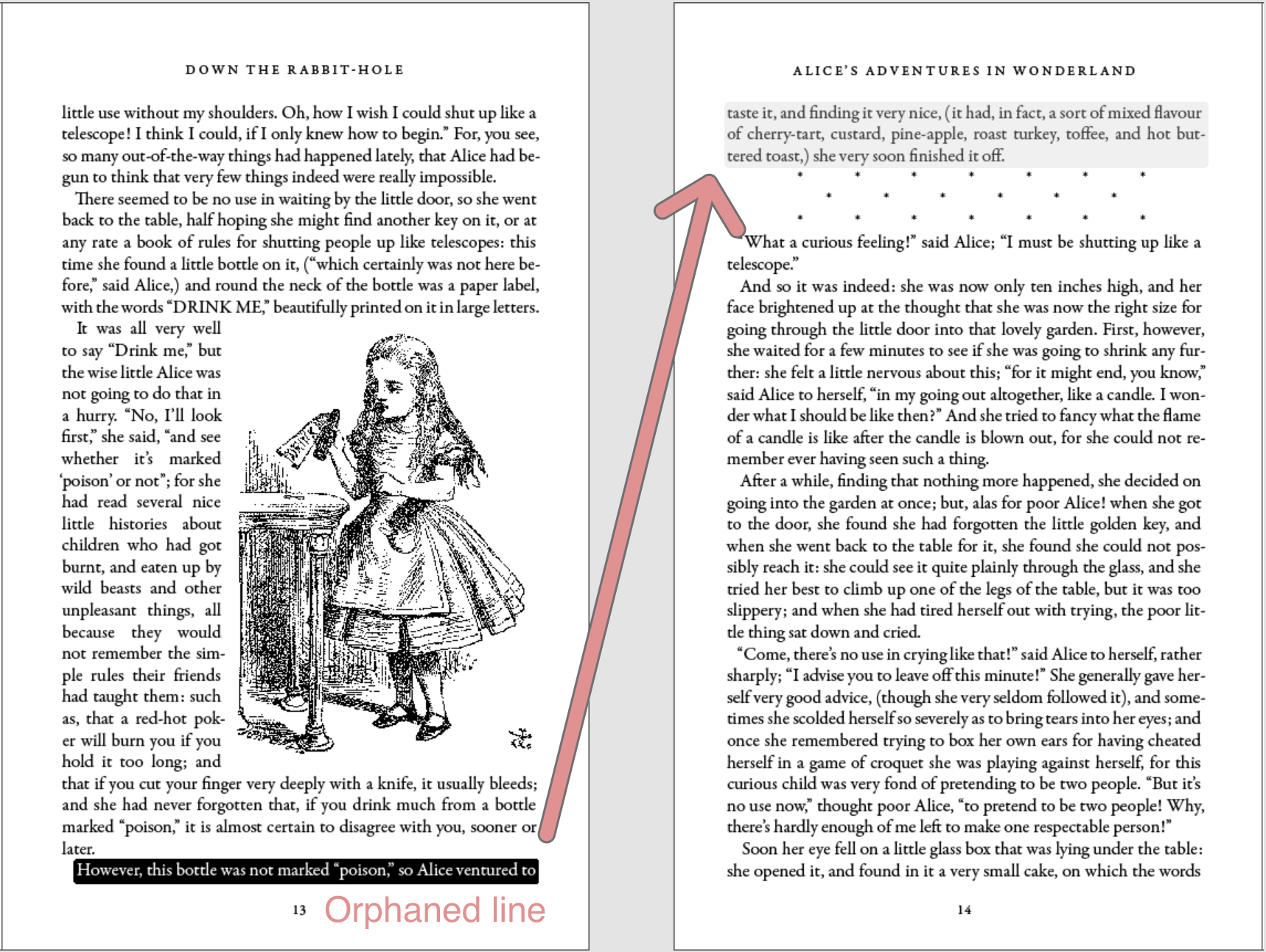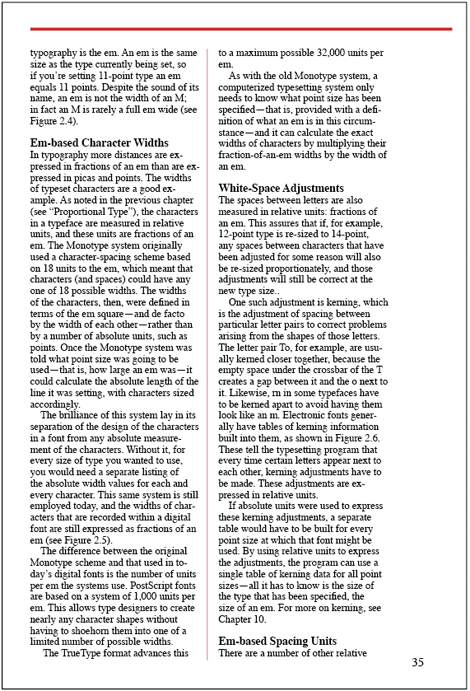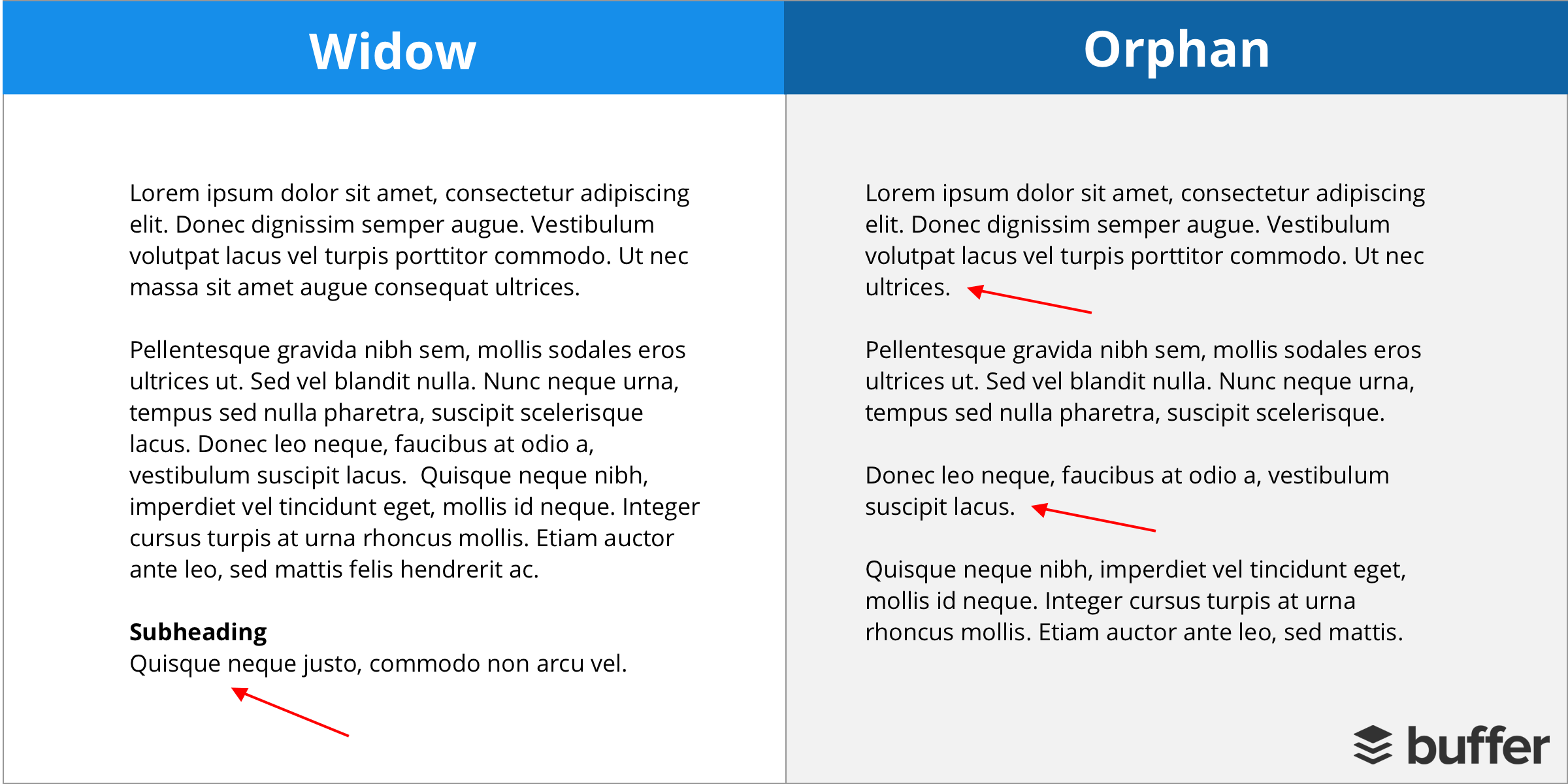

#WIDOWS AND ORPHANS EXAMPLES MANUAL#
The Chicago Manual of Style provides these definitions: Widow A paragraph-ending line that falls at the beginning of the following page or column, thus separated from the rest of the text. There is some disagreement about the definitions of widows and orphans what one source calls a widow another calls an orphan. (The typographer's terms for the top and bottom of a page or column are head and foot.) In typesetting, widows and orphans are lines at the beginning or end of a paragraph that are left dangling at the top or bottom of a page or column, separated from the rest of the paragraph. Print does not have this problem, because you have 2 pages (Left/Right) visible at the same exact time.A widowed line: the last line of a paragraph, all alone on the other side of a page break.Īt the end of the first paragraph, the word "lorem" is an orphan in the second sense: a very short final line that, because the rest of its line is white, creates an impression of two lines of whitespace between the paragraphs. (For more info on that, see the famous 2019 thread: "Widows and Orphans") Side Note: Messing around with the widows/orphans setting causes quite the ruckus.įor example, many ereaders default to using 1/1-to maximize the amount of text per screen + make sure the bottom margin is full.Ī few years back, Amazon decided to randomly change their widows/orphans to 2/2-after a decade+ of people getting used to 1/1! Lots of people now saw "extra gaps" at the bottom of their screen, then thought:
#WIDOWS AND ORPHANS EXAMPLES CODE#
You want to code the book following best practices, then typically leave the rest on defaults. Trying to keep large chunks of text together-like an entire poem-becomes a near-impossibility. You'll have no idea where any text will land, so you'll just have to code the book well, cross your fingers, and hope for the best.


The above is my guess based on my understanding of how widows and orphans work. I know there has been discussion of how best to do poetry, but, it isn't my thing. The real experts on creating ebooks hang out there. Sample code is always good and screenshots to show what it looks like will help.Īlso, questions like this would be much better in the Workshop section of the forum. If I have misunderstood what you are doing, then we need more information on what you are doing and what is not working. And, I expect a lot of other epub renders do the same thing. The renderer for kepubs does not do any widows and orphans calculations.

Or at least it should in epubs for any reader that is based on the Adobe RMSDK, which the epub reader on a Kobo device is. But, I'd be lazy and just set it to the number of lines in the longest verse. If you are trying to keep each verse together and you are using a paragraph for each verse with a br tag for the lines, then setting the widows and orphans to the one higher than half of the number of lines in the longest verse should work. Which means a three line paragraph that goes over the end of a page will always move to the next page, but a four line paragraph might have two on each page. Using "2" means that you have to have at least two lines together in the paragraph at the end of the page or top of the next. If so, using 1 for widows and orphans would be the worst thing you could.Ī "1" for widows and orphans means to allow a single line as either a widow or orphan. As you are talking about poetry, my guess is you are trying to to keep each verse together and not split them over a page break. I'm not sure what you mean by "won't disappear".


 0 kommentar(er)
0 kommentar(er)
